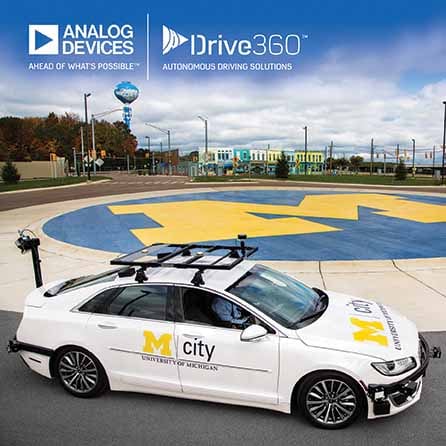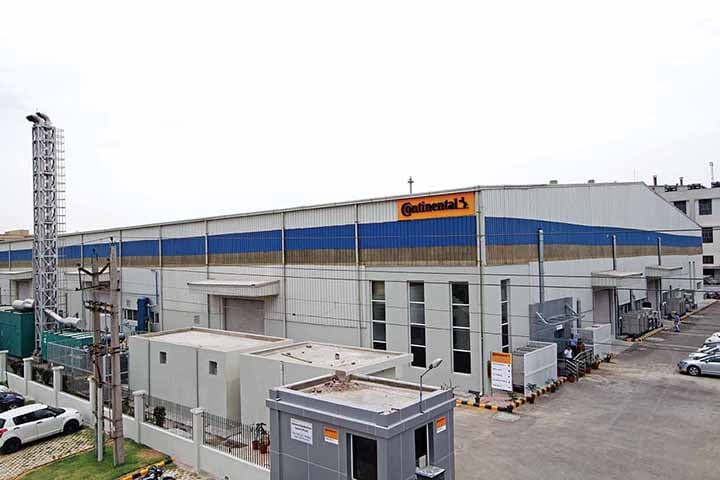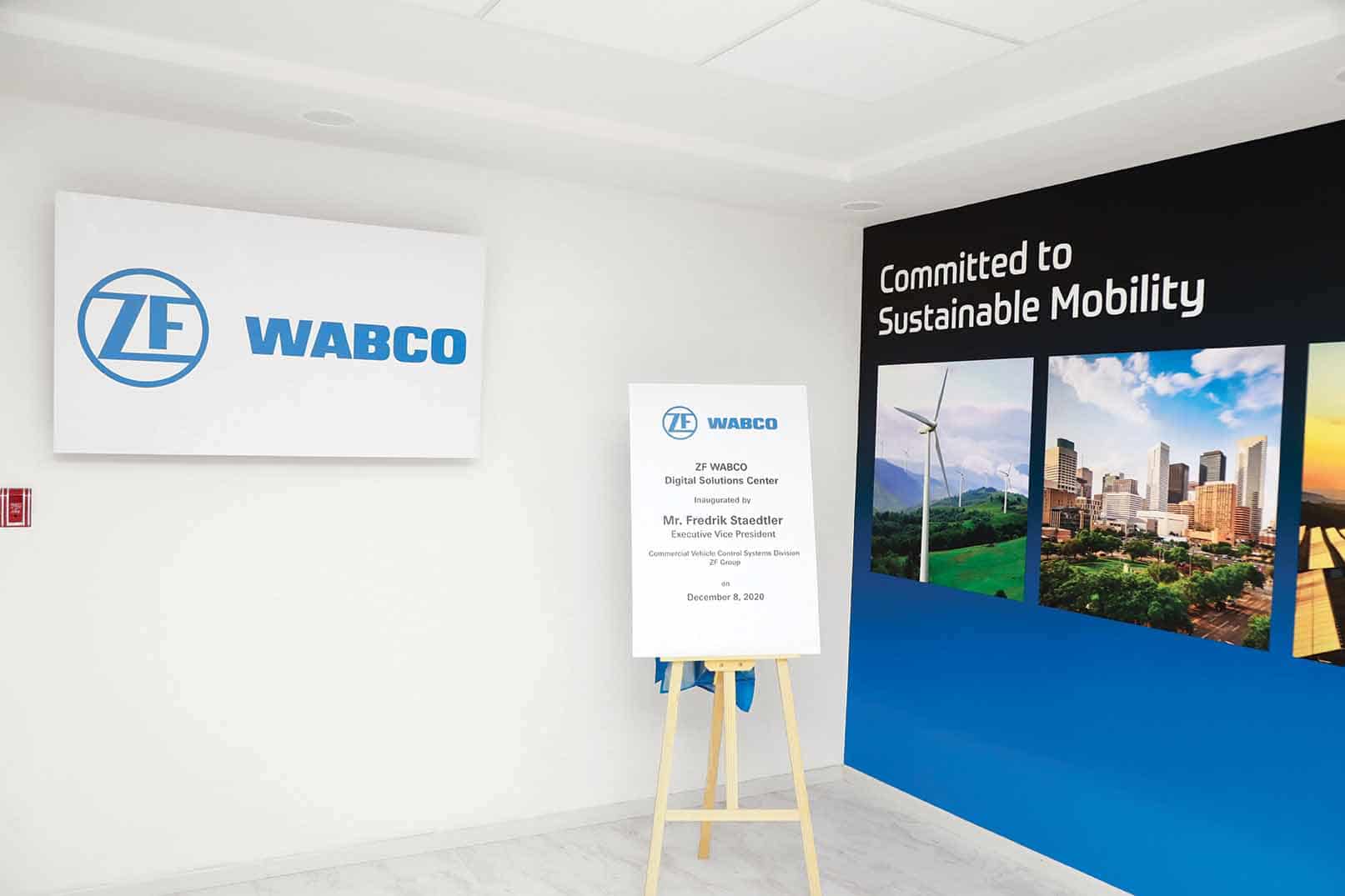As the world continues to respond to the Covid-19 crisis, which resulted in tremendous loss of life and the grinding halt of the world economy, we can begin to envision what a post-Covid-19 world may look like.
Story by: Patrick Morgan, Vice President and General Manager of Automotive Business Unit, Analog Devices
 Changes to how we interact with each other, and service workers are sure to come about, but a lesser discussed result of the Covid-19 crisis is the indirect and unintended impact it may have on the environment. Through the month’s long stay-at-home mandates to flatten the curve across the globe, the world has gotten a peek into the promise that a carbon-neutral or drastically reduced carbon future may hold. With fewer cars on the road, boats in the water, and planes in the sky, our decades-long damaging impact on the environment has become much clearer. Before versus after stay-at-home mandate pictures and videos of the environmental impact have become viral sensations. For instance, residents of the province of Punjab in India saw the Himalayas from a distance of 150 miles for the first time in 30 years due to reduced air pollution, and sea life not seen in the waterways of Venice for years returned, as boat traffic and water pollution in the region ceased. Carbon dioxide, carbon monoxide, and nitrous oxide emissions were down significantly in Beijing, New York City and Paris. Nature bounced back, if only for a moment in time. While putting transportation and transportation infrastructure on hold indefinitely in the name of environmental integrity is not a feasible solution, and would surely cripple world economies, the carbon-neutral promise of an electrified future allows us to have the best of both worlds.
Changes to how we interact with each other, and service workers are sure to come about, but a lesser discussed result of the Covid-19 crisis is the indirect and unintended impact it may have on the environment. Through the month’s long stay-at-home mandates to flatten the curve across the globe, the world has gotten a peek into the promise that a carbon-neutral or drastically reduced carbon future may hold. With fewer cars on the road, boats in the water, and planes in the sky, our decades-long damaging impact on the environment has become much clearer. Before versus after stay-at-home mandate pictures and videos of the environmental impact have become viral sensations. For instance, residents of the province of Punjab in India saw the Himalayas from a distance of 150 miles for the first time in 30 years due to reduced air pollution, and sea life not seen in the waterways of Venice for years returned, as boat traffic and water pollution in the region ceased. Carbon dioxide, carbon monoxide, and nitrous oxide emissions were down significantly in Beijing, New York City and Paris. Nature bounced back, if only for a moment in time. While putting transportation and transportation infrastructure on hold indefinitely in the name of environmental integrity is not a feasible solution, and would surely cripple world economies, the carbon-neutral promise of an electrified future allows us to have the best of both worlds.
Electric vehicles at the epicentre of electrification
At the centre of the world’s push to a more sustainable, electrified future is the Electric Vehicle (EV). According to the World Economic Forum, “215 million electric passenger vehicles will be on the road by 2030. This implies a 23 per cent growth in new sales of electric passenger vehicles every year from 2018 to 2030.” With the worldwide adoption rate of electric vehicles projected to grow at such a rapid rate over the next decade, the demand for supporting technology will continue to increase. Nearly every region of the world has renewed its EV incentives, and every major OEM is on track to electrify its vehicle fleet. The world is doubling down on electric. Now is the time to push for accelerated adoption of electrification technology, but it won’t happen overnight. Many EV adoption barriers still exist across the entire electrification ecosystem.
Today’s power grid infrastructure is woefully unequipped to handle the amplified demands that will come with an increase in electric vehicles on the road. Also, electric vehicles are yet to achieve the price and performance parity with combustion engine vehicles necessary to spark demand among consumers. In addition, automotive manufacturers are still searching for a more efficient and cost-effective way to scale electrification technology across their fleets. Finally, EV battery recycling and reuse programs today are not cost and are resource-efficient enough to warrant widespread adoption. Without EV battery reuse and recycling for second-life applications, many electric vehicle batteries end up in landfills. This current practice is out of line with the greener promise that comes with electrification adoption.
The foundation of an electrified future: ESS, BFT, and Battery Chemistry
Energy storage has become a global focus in recent years, assisted by the projected adoption rate of electric vehicles and other electrification technology. As the world becomes increasingly reliant on electrification, the strain on the existing power grid could be substantial. Energy Storage Systems (ESS) allow for stabilisation of the modern grid by using large batteries as a buffer to store off-peak energy generated from renewable sources and making the energy available anytime, but especially during times of high or peak demand, to all users, and for all applications, including electric vehicle charging. ESS can leverage many buffers, placed near the point of load, so the existing grid can supply more energy without more power lines or more power plants, reducing costs associated with upgrading infrastructure.
 In 2030, according to Bloomberg New Energy Finance, 65 per cent of storage capacity added will be used to support the integration of variable renewable energy sources onto the grid and to offer various grid services; 30 per cent to support residential, commercial, and industrial facilities; and five per cent to support EV infrastructure. Battery formation and test is a crucial part of the battery manufacturing process for electric vehicles, as this is when it’s determined whether the battery will meet critical performance and safety criteria. Not meeting these criteria renders the battery useless or negatively impacts the efficiency of the battery during operation and second life. The formation and test process consist of extremely precise administrations of current and voltage over the course of 24 to 36 hours. Going too fast or without high accuracy risks damages the active chemistry within the battery cell, thus reducing its overall capacity and useful life significantly.
In 2030, according to Bloomberg New Energy Finance, 65 per cent of storage capacity added will be used to support the integration of variable renewable energy sources onto the grid and to offer various grid services; 30 per cent to support residential, commercial, and industrial facilities; and five per cent to support EV infrastructure. Battery formation and test is a crucial part of the battery manufacturing process for electric vehicles, as this is when it’s determined whether the battery will meet critical performance and safety criteria. Not meeting these criteria renders the battery useless or negatively impacts the efficiency of the battery during operation and second life. The formation and test process consist of extremely precise administrations of current and voltage over the course of 24 to 36 hours. Going too fast or without high accuracy risks damages the active chemistry within the battery cell, thus reducing its overall capacity and useful life significantly.
To compound the already difficult battery formation and test, equipment and battery manufacturers are being further challenged by emerging battery chemistry. The new chemistries require even higher degrees of precision electrical measurement under the toughest of manufacturing conditions, all while keeping capital expenditures under control. Additionally, rapid scaling requires manufacturers to reduce the footprint of existing formation and test equipment.
As we look to the future, we see the battery chemistries such as Lithium Iron Phosphate (LiFePO) growing in importance. While cobalt-based chemistries may deliver 10 per cent to 20 per cent more energy density than LiFePO, cobalt has high ecological toxicity, and the controversial mining practices of cobalt have resulted in its listing as a conflict material—connected with the commission of violations of human rights. At its current rate of use, the world’s cobalt reserves may be exhausted by 2030. Furthermore, LFP has low cost, which is safer with respect to handling punctures or thermal runaway issues, and is fully proven in production having been used in the industry for over 10 years. It is also fully supported as the primary technology of choice by leading Original Equipment Manufacturers (OEMs).
Operation: Accelerating mainstream adoption of electric vehicles
 Today’s EVs have a driving range of anywhere from 60 miles to 400 miles depending on vehicle model, with a recharging time from 30 minutes to 12 hours depending on the type of vehicle charger—great for short-hauls or commuter-type driving where the vehicle can be charged at home. However, range and charging times are important factors for the broader automotive market. Furthermore, with 10x growth projected in the EV market during the next decade, there is an increasing need for an effective Battery Management System (BMS) to monitor, manage, and maintain high-performance batteries to power millions of electric vehicles.
Today’s EVs have a driving range of anywhere from 60 miles to 400 miles depending on vehicle model, with a recharging time from 30 minutes to 12 hours depending on the type of vehicle charger—great for short-hauls or commuter-type driving where the vehicle can be charged at home. However, range and charging times are important factors for the broader automotive market. Furthermore, with 10x growth projected in the EV market during the next decade, there is an increasing need for an effective Battery Management System (BMS) to monitor, manage, and maintain high-performance batteries to power millions of electric vehicles.
Unlike a single energy storage element, such as a fuel tank, an EV battery pack consists of hundreds or thousands of individual battery cells working together. As power flows into or out of the battery pack, the cells must be precisely managed together with excellent accuracy to ensure maximum range per charge. Furthermore, though the electronics cost only a fraction of the cost of the battery, they are a major factor in determining vehicle range, safety, and cost. For example, to ensure maximum usable battery capacity for the full lifetime of the vehicle, the accuracy must be guaranteed across all operating conditions and harsh environments, including extreme temperatures as well as magnetic and electric noise, for the full 15 year lifetime of the vehicle. State-of-the-art accuracy is as good as two mV, which must be guaranteed at each cell within the 400-800 V battery pack. To ensure safety, the electronics must be carefully designed from the beginning to fully comply with all stringent safety standards worldwide, which are in constant evolution around the world. These standards go far beyond just ASIL-D compliance; they require innovative battery functional architectures to be developed.
Furthermore, new disruptive technology is coming for BMS, and this technology is wireless. Built upon existing components of the wired BMS, the wireless BMS recently developed by Analog Devices eliminates the need for the wire harness known to connect the battery cells together in turn saving engineering design and development costs, as well as the associated mechanical challenges and complexity of the wire harness. It also allows the battery pack design to become highly modular and scalable so that it can be reused across multiple car designs. Also, because each battery module is wireless, data can be collected and stored from the time the cell is formed through storage, assembly, and used within the vehicle, enabling state-of-health calculations that can set a residual value for the battery pack. This reduces the cost of a battery and enables a more efficient second use (or second life), such as in storage, recycling, or other applications, reducing the overall
cost to the manufacturer and the vehicle owner and limiting environmental impact.
Battery Second Life: A self-sustaining electrification ecosystem
While touted as a green alternative to combustion engines and fossil fuels, EVs have an obvious Achilles heel–what to do with a half-tonne of battery when it can no longer hold a large enough charge to power the vehicle? Today, recycling is the more common option, a process that recovers some–but not all–raw materials such as cobalt and lithium. Recycling is costly, unregulated, and lacks a clearly defined supply chain. As such, the Institute for Energy Research expects that by 2025 the world will have accumulated more than 3.4 million discarded EV batteries, up from about 55,000 last year. An alternative to recycling, or more accurately an interim step, is emerging in the form of battery reuse. When a vehicle’s lithium-ion battery degrades to 70-80 per cent of its original charge capacity, after eight to 10 years of use, it can no longer power the vehicle and needs replacement. The growing supply of these retired batteries is creating a whole new market opportunity that some refer to as the second-life battery sector or battery second life.
 Second-life battery applications could add another five to 10 useful years, but ultimately that lifespan will be determined by how well the battery was treated during its primary use. Wireless BMS technology (WBMS) collects battery data continuously and transmits and stores it in the cloud—making it a perfect tool for historical granular data record-keeping. WBMS, by its wireless nature, enables battery data to be stored with the battery cells before they are used in the vehicle.
Second-life battery applications could add another five to 10 useful years, but ultimately that lifespan will be determined by how well the battery was treated during its primary use. Wireless BMS technology (WBMS) collects battery data continuously and transmits and stores it in the cloud—making it a perfect tool for historical granular data record-keeping. WBMS, by its wireless nature, enables battery data to be stored with the battery cells before they are used in the vehicle.
During vehicle operation, calculations are performed to understand the State-of-Health (SoH) of the battery and can be updated continuously according to driving and environmental conditions, providing a powerful gauge the life left in the battery pack. This sets a residual value on the battery pack, which lowers overall costs, and also sets a direction for the next life of the battery cells.
Before a battery is repurposed into second life, the seller can use that data to generate an extensive SoH history, enabling both buyers and sellers the ability to assess the battery’s value before arriving at a fair sale price. According to McKinsey & Company, “Finding applications for these still-useful EV batteries can create significant value and ultimately even help bring down the cost of storage to enable further renewable-power integration into our grids.” EV batteries can be repurposed for second life into ESS to suit their reduced performance capabilities, even if they no longer maintain EV performance standards.
The electrification ecosystem
As the world rapidly moves toward more environmentally sustainable applications, it is important to consider the implications and barriers that exist across the entire electrification ecosystem. A focus on one area alone will not bear the fruit of a greener tomorrow.
The promise of a clean and healthy future
Electricity is central to all of our lives. Hospitals, schools, houses, streetlights, and communication are dependent upon its ability to power our modern society. Now, more than a century after the first wires crisscrossed our cities; the power industry is undergoing a second revolution—one that will not only shape the fuel mix powering the grid but also the distribution system itself—from centralised to decentralised. In the balance lies the health of our planet and ourselves.
The burning of fossil fuels to produce electricity or heat is responsible for roughly half of the global warming pollution. Second life battery recycling can help reduce resource depletion and lower ecological toxicity. ESS has the potential of delivering the promise of an electrified future by storing excess solar and wind power generated locally and selling it back to a hungry energy grid. EVs mounting advance over gas-guzzling cars can, in time, lower air pollution in urban areas by between 50-90 per cent. ACI
















Leave a Reply